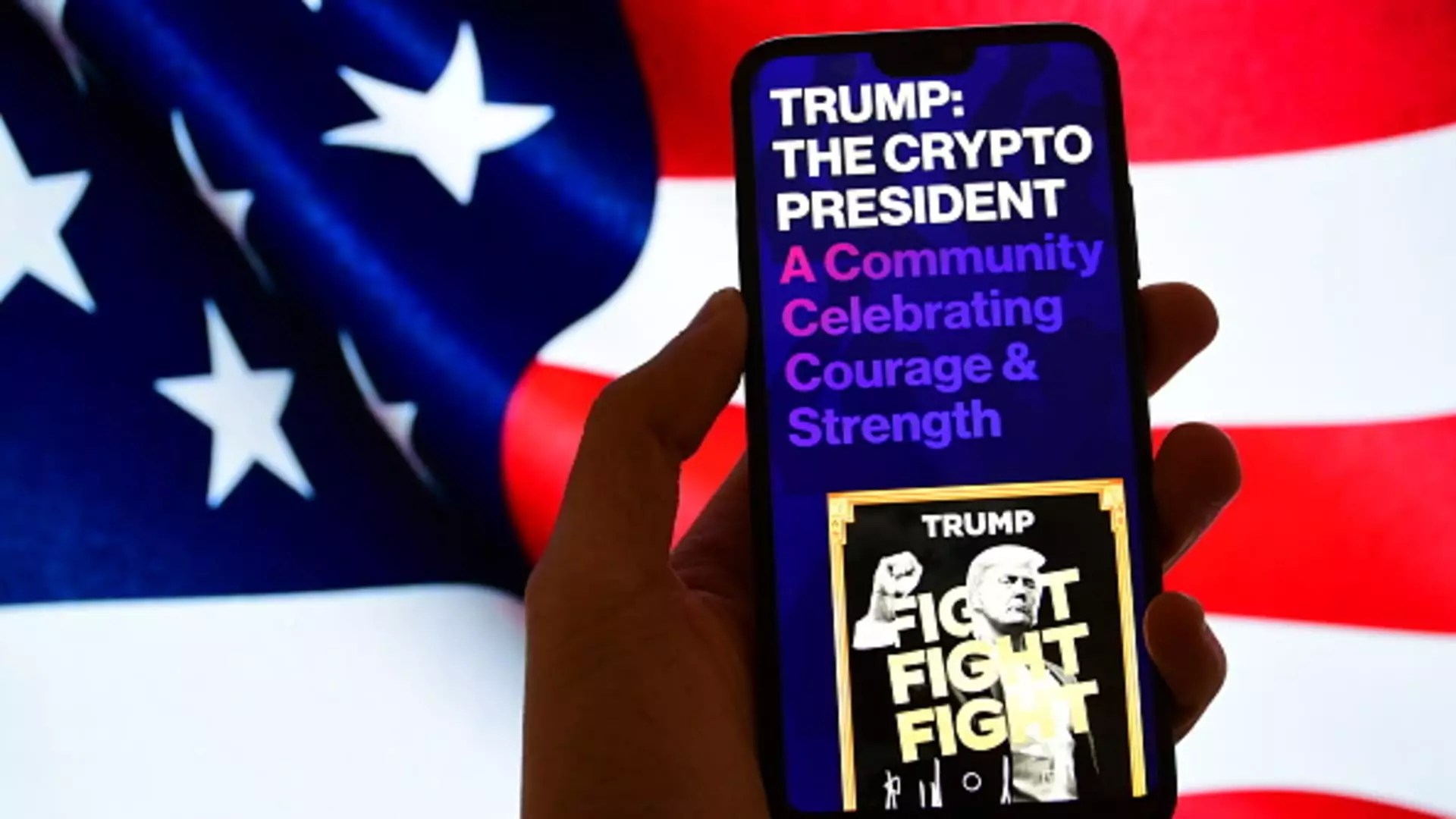In a world where traditional finance is being overshadowed by digital currencies, the recent announcement from former President Donald Trump regarding the creation of a U.S. strategic crypto reserve is not merely a financial maneuver; it’s a declaration of intent that challenges federal policies on cryptocurrencies. With lofty rhetoric about making the U.S. the “Crypto Capital of the World,” Trump is igniting conversations not only about the role of digital currencies but also about national integrity and innovation. This ambition is a welcome shift from past administrations that appeared reluctant to embrace the cryptocurrency revolution, which has been tainted by skepticism, primarily under the Biden administration’s regulatory climate.
The U.S. Crypto Reserve, as proposed, isn’t just a basket of assets; it’s meant to showcase the government’s willingness to adopt cryptocurrencies like Bitcoin (BTC) and Ether (ETH) while prioritizing altcoins such as XRP, Solana’s SOL, and Cardano’s ADA. This is a significant departure from the previous administration’s more cautious, almost hostile, approach and highlights a proactive stance that could resonate with the growing voter base interested in digital currencies.
Market Reactions: Indicators of Hope?
Immediately following Trump’s announcement, cryptocurrencies experienced an impressive rally. XRP surged by an astounding 33%, and Cardano spiked over 60%. Such spikes aren’t born of mere speculation; they demonstrate palpable investor confidence coupled with relief that a clearer policy direction might finally be in the pipeline. The rally shows how much the market has been awaiting positive news—news that could lift the shroud of uncertainty cast by past regulatory actions.
Companies and ordinary investors alike have long been wary of crypto’s volatile landscape, but the prospect of official backing could encourage broader institutional investment. Should these initial market reactions translate into sustained growth, it would mark a pivotal shift for cryptocurrencies, potentially normalizing their place in the financial ecosystem and making room for innovation.
However, it’s essential to approach these market signs with tempered optimism. The cryptosphere is known for its erratic nature, where good news can turn sour overnight. While the initial reactions are encouraging, the long-term effects remain to be seen.
Strategic vs. Stockpile: A Clarifying Shift
One of the most noteworthy distinctions in Trump’s announcement is his use of the term “strategic crypto reserve” rather than merely referring to a “stockpile.” This careful choice of words underscores an active and dynamic approach to cryptocurrencies, emphasizing regular purchases and an ongoing commitment to their integration within government financial policies. Past assurances fell short of tangible impacts and left investors grappling with the uncertainty of federal interference.
This new strategy implies an ongoing investment strategy rather than a passive approach. By signaling a willingness to actively buy cryptocurrencies at regular intervals, Trump has initiated a dialogue about creating stability and predictability within a notoriously volatile market. This highlights a crucial understanding: if the government will engage actively with crypto, it may reduce hesitancy from potential adopters.
Political Rivalry: The Tug-of-War for the Future
Trump’s announcement could also be seen as a countermeasure—a direct challenge to the Biden administration’s cautiousness regarding digital assets. Given that cryptocurrencies have often been framed through the lens of corruption and instability during this administration, Trump’s strategic pivot could signify a revitalization of the conversation around innovation and freedom in finance.
Moreover, Trump’s re-election campaign is intrinsically linked to crafting a narrative that positions himself as a champion for the nascent cryptocurrency industry. If the strategic reserve leads to tangible economic benefits, it could play a crucial role in attracting younger, tech-savvy voters who are disillusioned by traditional financial institutions.
But this isn’t just about political theatrics; there’s a palpable enthusiasm among voters grappling with inflation and economic instability. A tangible, supportive relationship between the administration and digital assets could very well translate to political gains if executed effectively.
Trump’s proposal for a U.S. Crypto Reserve is an audacious move aimed at reshaping the digital landscape and potentially redefining the political climate. The implications are vast, and stakeholders, from investors to policymakers, are eager to watch how this bold initiative pans out.


Leave a Reply